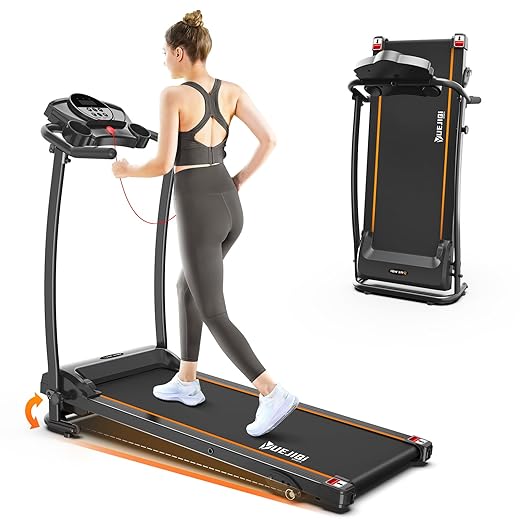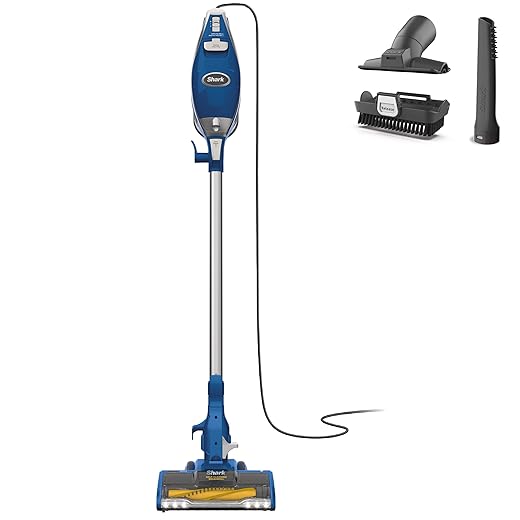Did you know that a well-maintained treadmill can last up to 10 years longer than one that isn’t cared for? For home fitness enthusiasts, folding treadmills are a game-changer, providing an effective workout while saving precious space. However, like any piece of equipment, they require regular maintenance to keep them running smoothly and to avoid costly repairs. In this step-by-step guide, we’ll walk you through the essential maintenance tips and tricks to ensure your folding treadmill remains in top shape, helping you achieve your fitness goals for years to come.



Guide to Properly Lubricating Your Treadmill Belt
Inspect the Treadmill Regularly
Perform a visual inspection of your folding treadmill at least once a month. Examine the frame for any cracks or signs of rust, especially around joints and hinges. Check the running belt for any fraying or cracking, as these can lead to serious malfunctions. Look closely at the cables for any signs of wear, such as fraying or exposure of wires. Inspect the console and buttons to ensure everything is functioning correctly and that there are no visible damages that could affect operation.
Tighten any loose screws or bolts you find during your inspection. Use a screwdriver to secure any components that feel wobbly or unstable. If you notice any irregularities in the belt alignment or if it appears to be slipping, adjust the tension as necessary to maintain proper function. Clean any dust or debris from the treadmill, focusing on areas around the motor and under the belt. Address any issues promptly to prevent further damage, which could lead to costly repairs or safety hazards while using the machine.



Keep the Treadmill Clean
Regularly clean your treadmill to prevent dust and debris from accumulating. Neglecting this task can lead to malfunctions and a less enjoyable workout experience. Follow these steps:
- Wipe down the console, handrails, and belt with a damp cloth. Use a mild detergent if necessary, but avoid harsh chemicals that could damage surfaces.
- Pay attention to the areas around the buttons and the display screen. Ensure that no moisture seeps into the electronic components.
- Use a soft brush or vacuum to remove dirt from the motor and frame. Focus on the crevices where dust tends to accumulate.
Ensure you perform this maintenance routine at least once a week, or more frequently if you use the treadmill regularly. Keep your equipment in top shape by promptly addressing any spills or visible dirt. This proactive approach will enhance the longevity of your treadmill and maintain its performance.
Lubricate the Belt
Check the manufacturer’s instructions for the correct type of lubricant suitable for your treadmill. Use only the recommended lubricant, as using the wrong type can damage the belt or other components. Ensure the treadmill is turned off and unplugged before starting. Locate the access points on the treadmill base, which are usually found at the front or back of the belt. Use a cloth to wipe any dust or debris from the surface of the treadmill frame around the belt to ensure proper adhesion of the lubricant.
Apply the lubricant evenly along the length of the belt, focusing on the center portion where it makes contact with the deck. Avoid over-lubricating, as excess lubricant can create a slippery surface that leads to safety issues. Once applied, manually rotate the belt a few times to distribute the lubricant evenly. After lubricating, plug in the treadmill and run it at a low speed for a few minutes to ensure that the lubricant is fully absorbed. Regularly check the belt’s condition and follow the lubrication schedule of every 3-6 months or after 150 miles to maintain optimal performance.
Check the Deck for Damage
Inspect the treadmill deck carefully for any visible signs of damage, such as cracks, warping, or uneven surfaces. Look for any areas that may appear sunken or raised, which can indicate structural issues. Pay close attention to the edges of the deck, as these are common points for wear and tear. Run your hand along the surface to feel for any irregularities that might not be immediately visible. This thorough examination is crucial, as a damaged deck can significantly affect the treadmill’s performance and your safety during workouts.
Contact the manufacturer immediately if you notice any issues during your inspection. Gather all relevant information, such as the model number and details of the damage, to facilitate the replacement process. Check the warranty status, as this may affect your options for repairs or replacements. Reach out via the customer service number or through their website for guidance on how to proceed. Do not use the treadmill until the issues are resolved, as it could pose a safety risk if continued to be used in a damaged state.
Store and Fold Properly
Fold your treadmill according to the manufacturer’s instructions to prevent mechanical strain. Locate the folding mechanism, which is typically found near the base or along the side of the treadmill. Engage the release lever or knob gently to initiate the folding process. As you lift the running deck, ensure that you support it securely to avoid any sudden drops that could damage the equipment. Keep your fingers clear of any pinch points during this action. Once the treadmill is in the upright position, make sure it locks into place firmly to maintain stability while stored.
Clear the surrounding area of obstacles before proceeding with storage to ensure safety and ease of handling. Move any objects or furniture that might hinder the folding process or pose a risk while maneuvering the treadmill. Store the treadmill in a dry location, away from dampness or excessive humidity, as moisture can lead to rust and mechanical issues over time. If feasible, consider covering the treadmill with a breathable cover to protect it from dust and debris while stored. Regularly check the storage area for any signs of moisture or pests that could potentially harm your equipment.
Key Maintenance Tips
In conclusion, maintaining your folding treadmill is essential for both safety and performance. By incorporating regular inspections, thorough cleaning, proper lubrication, and thoughtful storage into your routine, you can ensure that your treadmill remains in excellent condition for years to come. This proactive approach not only enhances your workout experience but also extends the life of your fitness equipment, allowing you to focus on achieving your fitness goals with peace of mind.
Essential Equipment Needed



Maximize Your Equipment
Maximize Your Space: A Step-by-Step Guide to Using Your Folding Treadmill
- Set Up Your Treadmill: Start by placing your folding treadmill on a flat, stable surface. Ensure there’s enough space around it for safety and access to power outlets
- Familiarize Yourself with Controls: Take time to learn the treadmill’s features, such as speed settings, incline adjustments, and preset workout programs. Refer to the user manual for detailed instructions
- Begin with Warm-Up: Before starting your workout, do a quick warm-up by walking at a slow speed for 5-10 minutes. This helps prepare your muscles and joints for exercise
- Start Slow and Gradually Increase Intensity: As a beginner, start with a comfortable walking pace. Gradually increase your speed or incline as you become more comfortable and build your fitness level
- Cool Down and Stretch: After your workout, spend a few minutes walking at a slower pace to cool down. Follow this with stretching exercises to improve flexibility and reduce muscle soreness
Everything You Need to Know About Folding Treadmills
The primary benefits of using a folding treadmill compared to a traditional treadmill include:
- Space-Saving Design: Folding treadmills can be easily stored away when not in use, making them ideal for smaller living spaces or homes with limited workout areas.
- Portability: Many folding treadmills are designed to be lightweight and equipped with wheels, allowing for easier relocation within a home or to different locations.
- Ease of Use: Folding mechanisms often allow for quick and simple setup and takedown, making it convenient for users who may not want to maintain a permanent workout space.
- Cost-Effectiveness: Folding treadmills tend to be more affordable than traditional treadmills, making them a budget-friendly option for those seeking to exercise at home.
- Versatility: Some folding treadmills come with features that accommodate various workout intensities and styles, catering to different fitness levels.
Overall, folding treadmills provide practical solutions for individuals looking to incorporate exercise into their daily routines without sacrificing space or budget.
When looking for a folding treadmill, the weight capacity you should consider typically ranges from 250 to 350 pounds. It’s important to choose a treadmill with a weight capacity that exceeds your body weight to ensure safety and durability. If you weigh close to the maximum capacity, it’s advisable to opt for a treadmill with a higher weight limit to accommodate wear and tear and to ensure a stable workout experience. Always check the manufacturer’s specifications for the most accurate information regarding weight limits.
I’ve found that using a microfiber cloth to clean my treadmill works wonders! It picks up dust and dirt without scratching the surface. Just a tip for keeping it in top shape!
Great tip! Microfiber cloths are perfect for preventing scratches while effectively cleaning. Thanks for sharing your insight!
I adapted the storage step for my small apartment by using a wall-mounted rack to hang my NordicTrack T 6.5 Si treadmill when it’s folded! Saves so much space!
That’s a brilliant solution! Utilizing vertical space is key in smaller living areas. Thanks for sharing your smart storage hack!
I had a friend who neglected to clean their Sole F63 treadmill regularly, and it ended up breaking down! They had to spend a fortune on repairs. This guide is crucial!
Wow, that’s a tough lesson! Regular cleaning can save a lot of hassle and money. Thanks for sharing that story—it’s a good reminder for all of us!
Any advanced tips for lubricating the belt? I feel like I’m not doing it right and want to make sure it’s done properly.
Great question! For lubricating the belt, make sure to use a silicone-based lubricant specifically designed for treadmills. Apply it under the belt and run the treadmill at a slow speed for a few minutes to distribute it evenly. Let me know if you need more help!
Can you explain more about checking the deck for damage? What signs should I look for?
Absolutely! When checking the deck, look for any cracks, warping, or tears. If you notice any unevenness when running or hear unusual noises, that could signal damage as well. It’s best to address these issues right away!
I’ve started doing these maintenance steps, and it’s incredible how much smoother my workouts are now! My running times have improved since I started taking care of my Lifespan TR1200-DT3 treadmill.
That’s fantastic to hear! Proper maintenance can definitely enhance performance. Keep up the good work, and enjoy those improved running times!
I love this guide! I’ve been following these steps with my ProForm 505 CST treadmill, and it’s been running like new for months now. Regular inspections really helped catch minor issues before they became big problems. Thanks for the tips!
Thanks for sharing your success with the ProForm 505 CST! Regular inspections really do make a difference. Keep up the great work and happy running!
What’s the best way to store a treadmill during the off-season? I’m worried about dust and humidity affecting my Bowflex Treadmill 10.
For off-season storage, ensure the treadmill is clean and lubricated, then cover it with a breathable cover to protect it from dust. Storing it in a dry, climate-controlled area is also a good idea to prevent humidity damage.